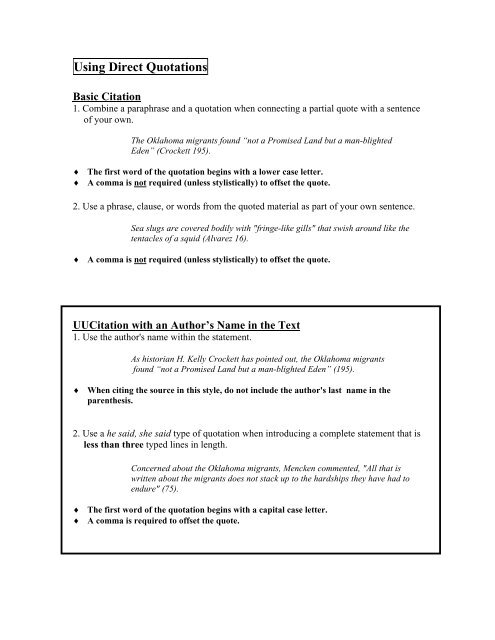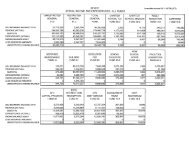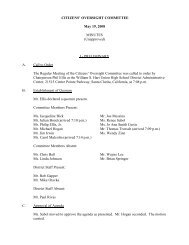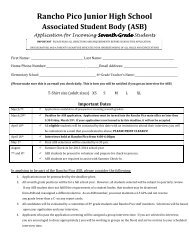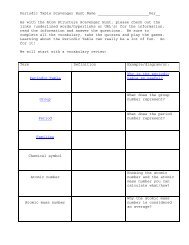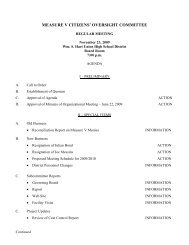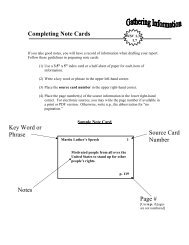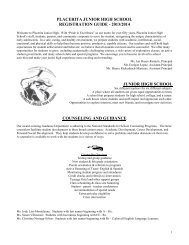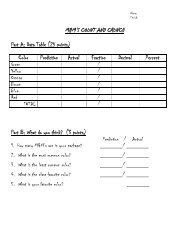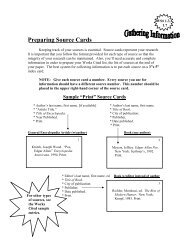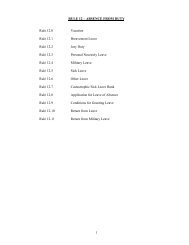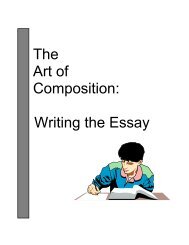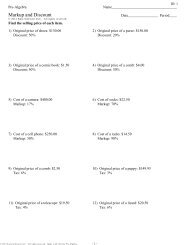Using Direct Quotations
Using Direct Quotations
Using Direct Quotations
You also want an ePaper? Increase the reach of your titles
YUMPU automatically turns print PDFs into web optimized ePapers that Google loves.
<strong>Using</strong> <strong>Direct</strong> <strong>Quotations</strong><br />
Basic Citation<br />
1. Combine a paraphrase and a quotation when connecting a partial quote with a sentence<br />
of your own.<br />
The Oklahoma migrants found “not a Promised Land but a man-blighted<br />
Eden” (Crockett 195).<br />
♦ The first word of the quotation begins with a lower case letter.<br />
♦ A comma is not required (unless stylistically) to offset the quote.<br />
2. Use a phrase, clause, or words from the quoted material as part of your own sentence.<br />
Sea slugs are covered bodily with "fringe-like gills" that swish around like the<br />
tentacles of a squid (Alvarez 16).<br />
♦ A comma is not required (unless stylistically) to offset the quote.<br />
UUCitation with an Author’s Name in the Text<br />
1. Use the author's name within the statement.<br />
As historian H. Kelly Crockett has pointed out, the Oklahoma migrants<br />
found “not a Promised Land but a man-blighted Eden” (195).<br />
♦ When citing the source in this style, do not include the author's last name in the<br />
parenthesis.<br />
2. Use a he said, she said type of quotation when introducing a complete statement that is<br />
less than three typed lines in length.<br />
Concerned about the Oklahoma migrants, Mencken commented, "All that is<br />
written about the migrants does not stack up to the hardships they have had to<br />
endure" (75).<br />
♦ The first word of the quotation begins with a capital case letter.<br />
♦ A comma is required to offset the quote.
Citation of a Long Quotation<br />
Use a colon to connect a statement with its corresponding quotation when the quotation is<br />
longer than three typed lines in length.<br />
No one is really certain about the origins of the term “Dust Bowl”:<br />
H. L. Mencken, in a footnote to the first supplement of his monumental<br />
The American Language, traces the term … to an Associated Press<br />
dispatch sent by staff writer Robert Geiger from Guymon, Oklahoma, on April<br />
15, 1935 . (French, Companion 3)<br />
It was not the associated press, however, that….<br />
♦ Do not use quotation marks when offsetting a quotation.<br />
♦ Never end a paragraph with a quotation.<br />
Notice that the<br />
period is place<br />
before the<br />
parenthesis in this<br />
type of citation.<br />
Citation with an Author’s Name and Title in the Text<br />
Use the author's name and the source title is you are using more than one source by the<br />
same author.<br />
In “The Commonplace and the Grotesque,” critic Edwin Bowdin points<br />
out that Steinbeck’s novel contains people who are isolated, lonely, and<br />
even “grotesque” (16).<br />
♦ When citing the source in this style, do not include the author's last name in the<br />
parenthesis.<br />
6 RULES TO KEEP IN MIND<br />
1. Introduce the quotation with your own words and integrate it grammatically into<br />
the sentence.<br />
2. Reproduce the exact wording, punctuation, capitalization, and spelling of the<br />
original word, including errors.<br />
3. Supplementary information should be enclosed in square brackets if within the<br />
quotation.<br />
4. Use the proper punctuation to introduce and end quotations.<br />
5. Separate longer quotations (more than 3 lines) from the text.<br />
6. Use single quotation marks for a quotation within a quotation.


